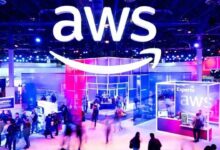AWS Bedrock: 7 Powerful Features You Must Know in 2024
Imagine building cutting-edge AI applications without managing a single server. That’s exactly what AWS Bedrock offers—scalable, secure, and fully managed foundation models ready to power your next-gen apps.
What Is AWS Bedrock and Why It Matters

AWS Bedrock is Amazon Web Services’ fully managed service that makes it easy for developers and enterprises to build with foundation models (FMs) without the complexity of infrastructure management. It’s part of AWS’s broader strategy to democratize access to generative AI, allowing businesses to innovate faster and more securely.
Defining AWS Bedrock in the AI Landscape
AWS Bedrock acts as a bridge between raw foundation models and practical business applications. Instead of downloading, hosting, or fine-tuning models on your own hardware, AWS provides a serverless interface where you can access state-of-the-art models from leading AI companies like Anthropic, Meta, Mistral AI, and Amazon’s own Titan series.
- It eliminates the need for GPU clusters or deep learning infrastructure.
- It enables rapid prototyping and deployment of generative AI features.
- It supports both text and multimodal use cases.
“AWS Bedrock allows enterprises to innovate with generative AI while maintaining control over data and compliance.” — AWS Official Blog
How AWS Bedrock Fits into the AWS Ecosystem
Bedrock isn’t a standalone product—it integrates seamlessly with other AWS services such as Amazon SageMaker, AWS Lambda, Amazon API Gateway, and Amazon VPC. This tight integration means you can build end-to-end AI workflows within the same trusted environment used for cloud computing, storage, and security.
- Use IAM policies to control access to models.
- Leverage Amazon CloudWatch for monitoring model performance.
- Secure data in transit and at rest using AWS KMS encryption.
For organizations already invested in AWS, Bedrock reduces friction in adopting generative AI by leveraging existing tools, compliance frameworks, and operational practices.
Key Features That Make AWS Bedrock Stand Out
AWS Bedrock isn’t just another API wrapper around large language models. It offers a suite of advanced capabilities designed for enterprise-grade applications. From model customization to security controls, Bedrock delivers where others fall short.
Serverless Access to Foundation Models
One of the biggest advantages of AWS Bedrock is its serverless architecture. You don’t need to provision or manage any infrastructure—just call the model via API and pay per usage.
- No need to manage EC2 instances or container orchestration.
- Automatic scaling based on demand.
- Reduced operational overhead and cost.
This makes it ideal for startups and enterprises alike who want to experiment with generative AI without upfront investment.
Support for Multiple Leading Foundation Models
AWS Bedrock supports a diverse portfolio of foundation models, giving developers flexibility in choosing the right model for their use case.
- Anthropic’s Claude series: Known for strong reasoning, safety, and long-context understanding. Ideal for complex Q&A, content generation, and code analysis. Learn more at AWS Bedrock with Anthropic.
- Meta’s Llama 2 and Llama 3: Open-weight models that support customization and on-prem deployment options. Great for developers who want transparency and control.
- Mistral AI’s models: High-performance French and multilingual models optimized for speed and efficiency.
- Amazon Titan models: AWS’s proprietary models tailored for summarization, classification, and embedding generation.
This multi-model approach ensures you’re not locked into a single vendor’s AI philosophy or limitations.
Model Customization and Fine-Tuning
While pre-trained models are powerful, they often need adaptation to specific domains. AWS Bedrock allows fine-tuning of selected models using your own data—without leaving the AWS environment.
- Fine-tune models on proprietary datasets (e.g., customer service logs, product manuals).
- Improve accuracy and relevance for niche applications.
- Maintain data privacy since training data never leaves your VPC.
For example, a financial institution can fine-tune a model to understand regulatory language or generate SEC-compliant reports.
How AWS Bedrock Enables Enterprise-Grade AI Development
Enterprises have unique requirements: security, compliance, auditability, and integration with legacy systems. AWS Bedrock is built with these needs in mind, making it one of the most trusted platforms for corporate AI adoption.
Security and Data Privacy by Design
Data security is non-negotiable in enterprise AI. AWS Bedrock ensures that customer data is handled with the highest standards.
- All data is encrypted in transit and at rest.
- Models do not retain customer input for training purposes unless explicitly opted in.
- You can deploy Bedrock within a private VPC, isolating traffic from the public internet.
- IAM roles and policies allow granular access control to model APIs.
Additionally, AWS complies with global standards like GDPR, HIPAA, and SOC 2, making Bedrock suitable for healthcare, finance, and government sectors.
Integration with AWS AI Services and Tools
Bedrock doesn’t exist in isolation. It works hand-in-hand with other AWS AI/ML services to create comprehensive solutions.
- Amazon SageMaker: Use SageMaker for advanced model evaluation, A/B testing, or building hybrid workflows that combine custom models with Bedrock FMs.
- Amazon Kendra: Combine Bedrock with Kendra to build intelligent search engines that understand natural language queries.
- Amazon Lex: Power conversational bots with Bedrock’s language generation capabilities for richer, more contextual dialogues.
- Step Functions: Orchestrate multi-step AI workflows (e.g., extract text → summarize → translate → send email).
These integrations enable developers to build sophisticated AI pipelines with minimal code.
Compliance and Governance Controls
For regulated industries, AWS Bedrock provides tools to maintain compliance and governance over AI usage.
- CloudTrail logs all API calls for auditing and forensic analysis.
- Configurable content filtering to prevent generation of harmful or inappropriate content.
- Model transparency reports and bias assessments available for select models.
- Support for data residency requirements through regional endpoints.
This level of governance is critical for organizations deploying AI in customer-facing applications or high-risk domains.
Use Cases: Real-World Applications of AWS Bedrock
The true value of AWS Bedrock lies in its versatility. From automating customer support to accelerating software development, Bedrock is being used across industries to solve real business problems.
Customer Service Automation
Companies are using AWS Bedrock to build intelligent virtual agents that handle customer inquiries with human-like understanding.
- Generate personalized responses based on customer history.
- Summarize long support tickets for faster resolution.
- Translate queries into multiple languages in real time.
For instance, a telecom provider might use Bedrock-powered chatbots to troubleshoot billing issues or explain plan upgrades—reducing agent workload by up to 40%.
Content Generation and Marketing
Marketing teams leverage AWS Bedrock to create high-quality content at scale.
- Automate blog post drafting based on keyword inputs.
- Generate product descriptions for e-commerce platforms.
- Create social media captions optimized for engagement.
With fine-tuned models, brands can maintain consistent tone and voice across all generated content, ensuring brand alignment.
Code Generation and Developer Assistance
Developers use AWS Bedrock to accelerate coding tasks and improve productivity.
- Auto-generate boilerplate code from natural language prompts.
- Explain complex code snippets in plain English.
- Identify bugs or suggest optimizations.
Integrated with IDEs or CI/CD pipelines, Bedrock can act as a 24/7 coding assistant, reducing development cycles significantly.
Getting Started with AWS Bedrock: A Step-by-Step Guide
Ready to try AWS Bedrock? Here’s how to get started, from account setup to your first API call.
Setting Up AWS Bedrock Access
Access to AWS Bedrock is typically granted through the AWS Console, but some models may require a request for enablement due to usage policies.
- Sign in to the AWS Management Console.
- Navigate to the Bedrock service under “Machine Learning.”
- Request access to desired models (e.g., Claude, Llama).
- Wait for approval (usually within minutes to hours).
Once approved, you can start using the models via API or SDK.
Using the AWS SDK to Call Bedrock Models
AWS provides SDKs for Python (Boto3), JavaScript, Java, and more. Here’s a simple example using Boto3 to invoke Claude:
import boto3
client = boto3.client('bedrock-runtime')
response = client.invoke_model(
modelId='anthropic.claude-v2',
body='{"prompt":"Explain quantum computing in simple terms.", "max_tokens_to_sample": 300}'
)
print(response['body'].read().decode())
This returns a generated explanation from the model. You can customize parameters like temperature, top_p, and max tokens to control output quality.
Best Practices for Testing and Deployment
To ensure reliable performance in production, follow these best practices:
- Start with small-scale testing using sample prompts.
- Use Amazon CloudWatch to monitor latency, error rates, and token usage.
- Implement retry logic and circuit breakers for API resilience.
- Cache frequent responses to reduce costs and improve speed.
- Validate outputs against known benchmarks or human reviewers.
Gradually scale up as confidence in the model’s behavior increases.
Comparing AWS Bedrock with Competitors
While AWS Bedrock is powerful, it’s not the only player in the generative AI platform space. Let’s compare it with key competitors like Google Vertex AI and Microsoft Azure OpenAI Service.
AWS Bedrock vs Google Vertex AI
Google Vertex AI offers similar access to foundation models, including PaLM 2 and Gemini, but with tighter integration into Google’s ecosystem.
- Strengths of Vertex AI: Strong NLP capabilities, advanced MLOps tools, and native integration with Google Workspace.
- Advantages of AWS Bedrock: Broader model selection (including open-source Llama), deeper enterprise security, and wider global infrastructure footprint.
For organizations already using AWS, Bedrock provides a more seamless transition to AI adoption.
AWS Bedrock vs Azure OpenAI Service
Microsoft’s Azure OpenAI Service focuses heavily on OpenAI models like GPT-4, making it ideal for teams invested in Microsoft products.
- Strengths of Azure OpenAI: Direct access to cutting-edge OpenAI models, integration with Microsoft 365, and strong support for enterprise AI governance.
- Advantages of AWS Bedrock: Multi-model flexibility (not tied to one provider), better pricing transparency, and native support for open models like Llama.
Bedrock gives you more choice and avoids vendor lock-in, which is crucial for long-term AI strategy.
Pricing and Cost Efficiency Analysis
Pricing is a critical factor when choosing an AI platform. AWS Bedrock uses a pay-per-token model, which is transparent and predictable.
- You pay separately for input and output tokens.
- Prices vary by model (e.g., Claude Instant is cheaper than Claude 2).
- No minimum fees or upfront commitments.
Compare this with Azure, where some models have higher entry costs, or Google, where usage-based billing can be less transparent. AWS also offers cost calculators and budget alerts to help manage spending.
Future of AWS Bedrock: Trends and Roadmap
AWS is continuously enhancing Bedrock to stay ahead in the fast-evolving AI race. Understanding the future direction helps businesses plan their AI investments wisely.
Upcoming Features and Model Additions
AWS regularly adds new models and capabilities to Bedrock. Recent updates include support for Llama 3 and enhanced multimodal features.
- Expected addition of video and audio understanding models.
- Improved agent frameworks for autonomous task execution.
- Enhanced RAG (Retrieval-Augmented Generation) tooling for knowledge grounding.
These features will enable more complex, real-world applications like AI-driven customer onboarding or automated legal document review.
AI Agents and Autonomous Workflows
One of the most exciting developments is the rise of AI agents—systems that can plan, execute, and learn from tasks autonomously.
- AWS is investing in agent frameworks that use Bedrock models as reasoning engines.
- Agents can perform multi-step actions like booking meetings, analyzing reports, or updating databases.
- Integration with AWS Lambda and EventBridge enables event-driven agent behavior.
This moves beyond simple prompt-response interactions to intelligent, goal-oriented systems.
Democratizing AI Across Industries
AWS aims to make AI accessible not just to tech giants but to small businesses, educators, and non-profits.
- Lowering barriers to entry with free tiers and starter kits.
- Providing industry-specific templates (e.g., healthcare, retail, education).
- Expanding regional availability to support global users.
The vision is a world where every organization, regardless of size, can harness the power of generative AI.
Challenges and Limitations of AWS Bedrock
Despite its strengths, AWS Bedrock isn’t without challenges. Understanding these limitations helps set realistic expectations.
Model Latency and Performance Variability
While Bedrock is generally fast, response times can vary depending on model size and load.
- Larger models like Claude 2 may have higher latency than smaller ones like Claude Instant.
- Peak usage periods can affect performance.
- No guaranteed SLA for all models, which can be a concern for real-time applications.
Solutions include caching, using smaller models for simple tasks, and load testing under realistic conditions.
Data Privacy Concerns and Misuse Risks
Even with strong security, generative AI poses inherent risks.
- Potential for data leakage if prompts contain sensitive information.
- Risk of generating biased, inaccurate, or harmful content.
- Need for human oversight in critical applications.
AWS provides tools like content filters and audit logs, but organizations must implement their own governance policies.
Learning Curve for New Developers
While Bedrock simplifies AI access, it still requires understanding of prompts, tokens, and model behavior.
- New developers may struggle with prompt engineering.
- Debugging model outputs can be challenging.
- Lack of standardized metrics for model evaluation.
Investing in training and adopting best practices is essential for success.
What is AWS Bedrock used for?
AWS Bedrock is used to build and scale generative AI applications using foundation models. Common use cases include chatbots, content generation, code assistance, document summarization, and customer service automation. It allows developers to integrate powerful AI models via API without managing infrastructure.
Is AWS Bedrock free to use?
No, AWS Bedrock is not free, but it operates on a pay-per-use model. You pay only for the tokens processed (input and output). AWS offers a free tier for new users to test certain models, but production usage incurs costs based on model and volume.
Which models are available on AWS Bedrock?
AWS Bedrock offers models from leading AI companies including Anthropic (Claude), Meta (Llama 2, Llama 3), Mistral AI, and Amazon’s Titan series. New models are added regularly, providing a diverse range of capabilities for different use cases.
How does AWS Bedrock ensure data privacy?
AWS Bedrock encrypts data in transit and at rest, allows deployment within private VPCs, and does not use customer data to train models unless explicitly opted in. It complies with major regulatory standards like GDPR, HIPAA, and SOC 2, ensuring enterprise-grade data protection.
Can I fine-tune models on AWS Bedrock?
Yes, AWS Bedrock supports fine-tuning for select foundation models using your own data. This allows you to customize models for specific domains or tasks while keeping your data secure within the AWS environment.
AWS Bedrock is revolutionizing how businesses adopt generative AI by offering a secure, scalable, and flexible platform. From startups to Fortune 500 companies, organizations are leveraging its serverless architecture, multi-model support, and deep AWS integrations to build intelligent applications faster. While challenges like latency and prompt engineering exist, the benefits far outweigh the drawbacks. As AWS continues to innovate—with AI agents, enhanced multimodal models, and broader accessibility—the future of Bedrock looks not just promising, but transformative.
Further Reading:









